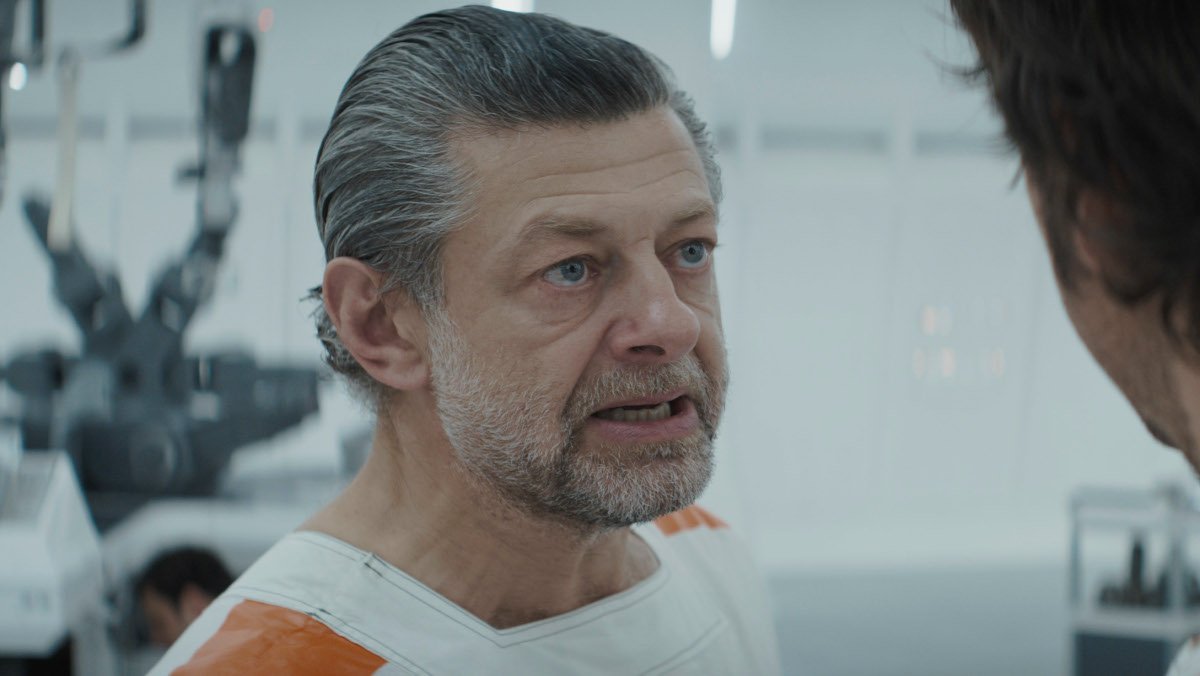INTERVIEW: Writer Beau Willimon Explained Why He Broke Our Hearts With ‘Andor’

Andor is my favorite Star Wars show, which is huge coming from someone like me—mainly because I love all things Star Wars, but god is Andor good. The series, created by Tony Gilroy, brings us through the life of Diego Luna’s Cassian Andor prior to our introduction to the character in Rogue One: A Star Wars Story and as we we are working towards the end of season one, we’ve gotten to see one of the most impressive arcs in a Star Wars live-action property yet: the prison on Narkina 5.
In preparation for the release of episode 10, “One Way Out,” I got to speak with writer Beau Willimon about the choices made, specifically pertaining to the arc we see with Andy Serkis’ Kino Loy.
**Spoilers for Andor lie ahead.**

For me, watching as Kino Loy looked at his freedom and looked to Cassian Andor and said “I can’t swim” filled me with such a sense of upset and dread that I instantly wanted answers to who was responsible for this. Luckily, I was talking to the man who wrote it the next day, but still, that pain led me to asking him about Loy and why the choice was made to have him featured so prominently in Cassian’s prison arc, only for him to have such a tragic end.
“I apologize [laughs] you felt like you had to fight someone,” Willimon said, because I did want to fight someone in the honor of Kino Loy. He went on to talk a lot about the reasoning behind the “I can’t swim” aspect of the story, as well as working with creator Tony Gilroy in the writers’ room. “But if you had a strong emotional reaction, that means we’re doing our job. Tony walked into the writers room, day one with a Bible that we had all read. He had a fairly extensive idea of what he wanted to do over the course of season one. And we knew that there was gonna be a prison at some point. This idea that Cassian, you know, if you put someone on the run, inevitably almost in a way they have to get caught or they have to be constricted in some way. So we knew there was gonna be some kind of prison, but that was not fleshed out at all. We didn’t know what that would be.”
In talking about the design of the prison, Willimon explained how they didn’t want Andor to fall into the trappings of the typical prison tropes and clichés. “When we got to talking about that, we started from a very simple place of there’s been a million prison movies out there. There’s a lot of tropes and clichés. How do we do something fresh?” he said. “If you’re expecting dark and gritty, and damp and shadows and things like that, maybe it’s brightly lit. Maybe it’s antiseptic. What’s a prison where you don’t have many guards? How do you pull that off? Well, maybe the floor needs to be electric. I don’t know. You start almost in a very simple and rudimentary place of like, how do we not do been done before? And then you start populating it with characters as you can have a framework.”
Enter Kino Loy
To Beau Willimon’s point, Kino Loy is the figure that gives Cassian the most guidance in the prison and particularly at the end of their journey together, as the two are the only ones who can join together to get everyone out of the prison safely. And that was, according to Willimon, the point of Loy as a character from the start.
“And we knew that we needed someone at the center of it that could be sort of Cassian’s guide into this world. Someone who, who had been living there, who was invested in this place, and someone who could have their own journey. Someone who in a way was very gung-ho about let’s get the work done,” he said. “There’s a system here and I am the face of that system who needs to, in his own microcosm, his own mini arc, become a Rebel essentially, which is the part and parcel of the larger story for Andor. Right? And so, you sort of grasp and grope your way through the dark, stumbling towards a story and a character that might have some emotional impact. And layer by layer you get to the figuring out who this guy is and then you get to the inevitable moment. Because if you don’t have this moment, there’s no show, which is the escape. And you start asking yourself, ‘Okay, well, what would be the most emotionally impactful thing that could happen here? If we are a celebrating and triumphing and Kino Loy’s transformation into a Rebel leader, there’s also the tragedy and sacrifice that comes from him not being able to swim.’ And when you pair that with a Luthen Rael saying, ‘What have I sacrificed? Everything,’ you’re now talking about sacrifice and cost. And that’s at the heart of Rebellion, at least in the story that we’re trying to tell.”
Talking to Willimon about the thinking behind the episode gave me such a profoundly deeper understanding of the journey the writers’ room went on to bring this arc to life, and god did it just make me love Andor more than I already did (which is saying a lot).
(featured image: Lucasfilm)
Have a tip we should know? [email protected]
